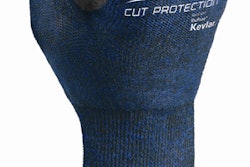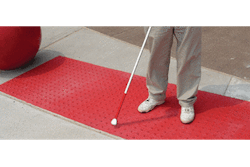
After highway worker Michael Ochoa was hit on an expressway ramp, he felt lucky to be alive. He says he also learned a couple of things.
If you get hurt in an accident, get an ambulance, even if you feel OK to drive. And sometimes, if you want charges filed, you have to make a fuss.
"The things I had to do to get some charges, it really makes you lose faith in the system," said Ochoa, 51, of Chicago.
Ochoa works for Mead Electric, a contractor for the Illinois Department of Transportation. He does things such as fixing traffic signals on expressway ramps.
At 10:50 a.m. Sept. 2, Ochoa was on the Sacramento ramp of the outbound Eisenhower, inspecting the signal. He had his traffic cone out, and his truck had strobes and flashers on.
A car stopped at the light. Then Ochoa said he saw a "blur" of a van moving fast behind the stopped car.
"I realized I wasn't going to get out of the way," said Ochoa, a father of four. "I saw the driver going over the signal light, knocking that to the ground, hitting me, and sending me about 10 feet in the air."
Tony Lampkin, 43, the driver of the van, stopped to check Ochoa and apologized for hitting him, Ochoa said. Lampkin was in his Cook County sheriff's officer uniform -- his shift at the Maywood courthouse started at noon.
Ochoa, lying on the ground and hurting "pretty bad," called his supervisor Jerry Lakomiak, who came to the scene. An Illinois State Police trooper, T.J. Marshall, talked to both Ochoa and Lampkin.
Marshall told Ochoa he would cite Lampkin for not reducing speed to avoid an accident. Ochoa asked if it wasn't also wrong to hit a pedestrian, and the trooper said, yes, he could write that up as well, Ochoa said.
The trooper asked Ochoa if he wanted an ambulance, but Ochoa said he felt he could drive himself to the hospital. Ochoa had a bruised hip, a ligament sprain in his knee, and a sprained wrist and shoulder. After two months, it still hurts to walk up ramps.
A week or so after the accident, Ochoa's wife, Irene, contacted State Police to see when the court date was. But no citations had been issued. She was told the trooper had discretion not to write a ticket, since there were no injuries.
There were more phone calls, back and forth. Ochoa talked to a couple of supervisors, including Master Sgt. Fred Hosteny, who kept telling Ochoa, "You weren't injured." Ochoa kept saying, "Yes, I was." Hosteny also pointed out that Lampkin didn't run Ochoa over "on purpose," Ochoa said.
"I said, 'I think he drove like a maniac on purpose,' " Ochoa said.
Ochoa asked Hosteny if Lampkin wasn't charged because he was in uniform. Hosteny said he hadn't known that. A few days later, Hosteny said charges would be filed, Ochoa said.
On Sept. 24, Lampkin was cited for failure to reduce speed to avoid an accident, and failure to yield to a worker in a construction zone.
Lampkin tells a slightly different story. He said that the light at the traffic signal had turned green, and the car at the light proceeded, but then stopped, forcing Lampkin to hit the brakes. "It was just a simple accident," said Lampkin. He said "no favoritism" was shown to him because of his uniform.
Lampkin has been an officer 12 years, and had no prior arrests or charges.
Marshall and Hosteny couldn't be interviewed because the case is ongoing. But Master Sgt. Isaiah Vega, a spokesman for the State Police, said the reason citations were not issued right away was because there was an issue over whether the area was considered a construction zone. Once that was determined, State Police had to find the driver to issue the citation, and there was a delay in doing this, Vega said.
"There are circumstances where citations are not issued," Vega said. He noted that Ochoa had refused an ambulance.
Irene and Michael Ochoa said they were never told when they talked to State Police that there was an investigation pending -- just that the trooper had discretion not to issue tickets, and no tickets would be issued. "I felt like I didn't count," Michael Ochoa said.
After talking to Ochoa, Cook County Assistant State's Attorney Akash Vyas told Circuit Court Judge Earl Hoffenberg at a Nov. 16 hearing that prosecutors would ask State Police to review the case for possible further charges. Lampkin wanted to get an attorney, and the case was continued.
Vyas told Ochoa he didn't have to be there for the Dec. 21 hearing, but Ochoa said he'll be there -- he wants to monitor this.
"I got run over," said Ochoa, who's not planning a civil suit. "I want to know that it's prosecuted to the fullest extent of the law."
HALF OF DRIVERS 18-34 ADMIT TEXTING ON THE ROAD
Young people are the most likely to engage in text messaging while driving, according to a survey conducted by FindLaw.com, a legal information Web site.
More than half of drivers between the ages of 18 and 34 say they have sent and received a text message while driving, and one out of 10 admit to having sent or received e-mails or surfed the Internet while behind the wheel.
FindLaw.com surveyed 1,000 American adults.
Most drivers surveyed admitted to engaging in distracting activities behind the wheel, including talking on a cell phone (66 percent) and putting on makeup (21 percent of women drivers), the survey found.
According to the U.S. Department of Transportation, 6,000 people were killed and a half-million injured last year in vehicle crashes connected to driver distraction.
A study by Car and Driver magazine found texting while driving more dangerous than drunken driving.
Contributing: AP
THE RIDE TRIVIA QUIZ
November is a bad month for ships on the Great Lakes -- on this date in 1912, a schooner bound for Chicago sank in Lake Michigan, killing everyone on board. What was the ship, and what was its cargo? Submit answer at blogs.suntimes.com/transportation.
The first person with the correct answer gets a Sun-Times T-shirt.



















